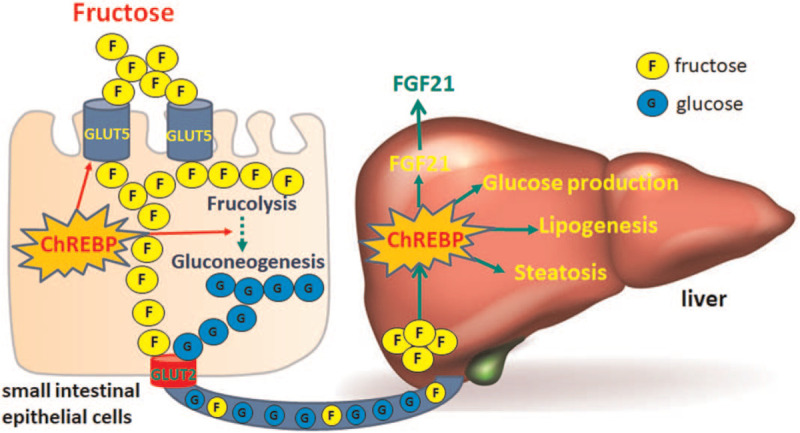Figure 2.

ChREBP regulates fructose metabolism in intestine and liver. Dietary fructose gets into absorptive enterocytes in small intestine through GLUT5 located at brush border, and is translocated into circulation via GLUT2. In enterocytes, fructose also undergoes fructolysis and gluconeogenesis, and consequently is absorbed into circulation in the form of glucose. As a positive feedback mechanism, dietary fructose activates ChREBP pathway, and thereby promotes fructose absorption and glucogenesis in enterocytes. In the liver, fructose-activated ChREBP promotes glucose production, lipogenesis, and FGF21 production and secretion. Long-term fructose overconsumption promotes the pathogenesis of hepatic steatosis due to excessive activation of ChREBP pathway. ChREBP: Carbohydrate-responsive element–binding protein; FGF21: Fibroblast growth factor 21; GLUT: Glucose transporter.
